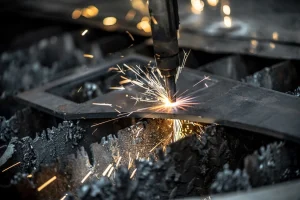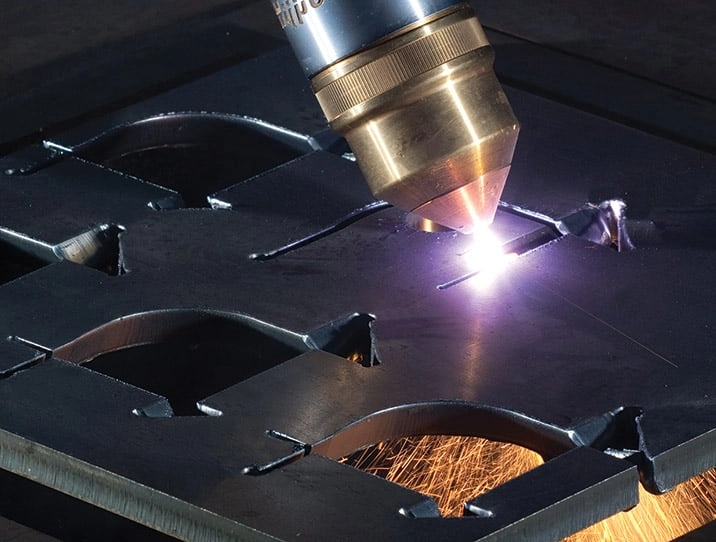Precision plasma cutting applications have revolutionized various industries, offering numerous benefits to society. In this article, we will explore the positive impact of precision plasma cutting technology on different sectors. By examining its applications in various contexts, we aim to shed light on the societal advantages it provides.
The precision of plasma cutting applications has transformed manufacturing processes, enabling the creation of intricate and accurate designs effortlessly. This level of precision has led to improved productivity and efficiency, resulting in cost savings for businesses. Moreover, precision plasma cutting has played a vital role in advancing industries such as aerospace, automotive, and construction, where precise cuts are crucial for optimal performance and safety.
Furthermore, the use of precision plasma cutting uses has contributed to environmental sustainability by promoting resource efficiency and reducing the overall environmental footprint. In this article, we will delve into these societal benefits in detail, providing a comprehensive understanding of the positive impact of precision plasma cutting uses on industries and the environment.
Key Takeaways
- Plasma cutting is versatile and can be used in various industries such as manufacturing, construction, automotive, and aerospace.
- Precision plasma cutting allows for intricate and complex shapes, reducing the need for secondary operations and increasing production efficiency.
- Precision plasma cutting minimizes material waste, reduces energy consumption, and has a positive environmental impact by improving energy efficiency and reducing carbon footprint.
- The use of plasma cutting technology creates new job opportunities, contributes to the economy, and fosters economic growth and development.
Understanding the Versatility of Plasma Cutting
Plasma cutting is a highly versatile and efficient cutting process that utilizes a high-temperature jet of ionized gas to melt through various materials. Its ability to cut through a wide range of materials, including metals, alloys, and even non-conductive materials like wood and plastic, makes it an invaluable tool in industries such as manufacturing, construction, automotive, and aerospace.
The precision and speed of plasma cutting allow for intricate designs and complex shapes to be easily achieved, making it ideal for creating parts and components for machinery and structures. Additionally, plasma cutting can be used for beveling, hole cutting, and even welding, further expanding its applications and usefulness in various industries.
Its versatility and precision make plasma cutting a vital tool for improving productivity and efficiency across different sectors.
Exploring the Various Industries Utilizing Plasma Cutting Applications
Plasma cutting is extensively utilized across a wide range of industries, showcasing its versatility and contributing to improved productivity and efficiency.
One of the primary industries that rely on plasma cutting is the metal fabrication industry. This process is used to cut various types of metal, including steel, aluminum, and stainless steel, to create precise and intricate shapes for construction, automotive, and aerospace applications.
Additionally, the manufacturing industry benefits from plasma cutting as it allows for the production of accurate and consistent parts for machinery and equipment.
The construction industry also utilizes plasma cutting for tasks such as cutting metal sheets for roofing and structural components.
Furthermore, plasma cutting is employed in the shipbuilding industry for the fabrication of hulls, decks, and other metal components.
Advantages of Precision Plasma Cutting for Manufacturing Processes
Precision plasma cutting offers several advantages for manufacturing processes.
Firstly, it provides exceptional precision and accuracy, allowing for the creation of complex and intricate shapes with high levels of detail. This is crucial in industries such as automotive, aerospace, and electronics, where precision is paramount.
Secondly, precision plasma cutting is a cost-effective solution compared to traditional cutting methods. It reduces material waste, increases production efficiency, and minimizes the need for secondary operations.
Moreover, plasma cutting is a versatile process that can be used on a wide range of materials, including steel, aluminum, and stainless steel. This versatility makes it suitable for various manufacturing applications.
Enhancing Efficiency and Productivity With Plasma Cutting Technology
Precision plasma cutting technology offers substantial benefits in terms of enhancing efficiency and productivity in various industries. This advanced cutting method utilizes a high-velocity jet of ionized gas, known as plasma, to cut through electrically conductive materials. By harnessing the power of plasma, manufacturers can achieve precise and clean cuts, reducing the need for secondary processing and minimizing material waste.

One of the key advantages of plasma cutting technology is its speed. Compared to traditional cutting methods, such as sawing or shearing, plasma cutting can significantly reduce processing time, allowing for faster production cycles and increased output. Additionally, the accuracy and precision of plasma cutting enable manufacturers to achieve intricate and complex designs, enhancing the overall quality of the finished product.
Furthermore, plasma cutting technology offers versatility across a wide range of materials, including stainless steel, aluminum, and even non-ferrous metals. This flexibility allows manufacturers to handle diverse cutting requirements and expands the possibilities for product innovation.
Environmental Benefits of Precision Plasma Cutting Applications
By utilizing precision plasma cutting technology, industries can achieve significant environmental benefits.
Precision plasma cutting applications offer advantages such as increased material utilization, reduced waste generation, and improved energy efficiency.
One of the main environmental benefits of precision plasma cutting is the ability to minimize material waste. The precise cutting capabilities of this technology allow for more accurate and efficient use of materials, resulting in less scrap and offcuts.
Furthermore, precision plasma cutting produces clean and controlled cuts, reducing the need for additional machining or finishing processes that can generate waste and consume additional resources.
Additionally, precision plasma cutting systems are designed to operate efficiently, minimizing energy consumption and reducing the overall carbon footprint.
Cost Savings and Economic Impact of Plasma Cutting in Society
Plasma cutting technology offers significant cost savings and has a substantial economic impact on society. Here are four ways in which plasma cutting contributes to cost savings and economic benefits:
- Increased Efficiency: Plasma cutting allows for faster and more precise cutting, reducing production time and increasing productivity. This leads to lower labor costs and higher output, resulting in overall savings for businesses.
- Material Savings: Plasma cutting produces a narrow and concentrated heat-affected zone, minimizing material wastage. This means that less material is needed for the same job, resulting in cost savings on raw materials.
- Versatility: Plasma cutting is capable of cutting a wide range of materials, including metal, plastic, and wood. This versatility eliminates the need for multiple cutting tools, reducing equipment costs and increasing operational flexibility.
- Job Creation: The widespread use of plasma cutting technology has created new job opportunities in industries such as manufacturing, construction, and automotive. This not only contributes to the economy but also provides employment opportunities for individuals, fostering economic growth and development.
Frequently Asked Questions
What Are the Different Industries That Use Plasma Cutting Applications?
Plasma cutting applications are widely used across various industries, including automotive, aerospace, construction, and metal fabrication. These industries rely on the precision and efficiency of plasma cutting technology to create intricate designs and shapes in metal materials.
How Does Precision Plasma Cutting Enhance Efficiency and Productivity in Manufacturing Processes?
Precision plasma cutting enhances efficiency and productivity in manufacturing processes by providing accurate and controlled cuts, reducing material waste, minimizing manual labor, and allowing for complex shapes and designs. This results in improved overall production speed and cost-effectiveness.
What Are the Environmental Benefits of Precision Plasma Cutting Applications?
Precision plasma cutting applications offer numerous environmental benefits. By using a focused and controlled plasma arc, these applications minimize material waste, reduce energy consumption, and emit fewer pollutants, making them a sustainable choice for various industries.
How Does Plasma Cutting Technology Contribute to Cost Savings and Economic Impact in Society?
Plasma cutting technology contributes to cost savings and economic impact in society by providing precise and efficient cutting solutions. It reduces material waste, increases productivity, and allows for the creation of complex designs, ultimately driving down production costs and boosting economic growth.
What Is the Versatility of Plasma Cutting and How Is It Utilized in Various Applications?
Plasma cutting is a versatile technology widely utilized in various applications. Its precision and efficiency make it ideal for cutting through a wide range of materials, including metal, plastic, and wood. This technology has revolutionized industries such as manufacturing, construction, and automotive.
Conclusion
In conclusion, precision plasma cutting applications have had a significant positive impact on various industries and the environment.
The versatility of plasma cutting technology has allowed for intricate and accurate designs, resulting in improved productivity and cost savings for businesses.
Furthermore, precision plasma cutting has played a crucial role in industries such as aerospace, automotive, and construction, where precise cuts are vital for optimal performance and safety.
Additionally, these applications promote resource efficiency and environmental sustainability by reducing material wastage and minimizing the overall environmental footprint.
You May Also Like:


